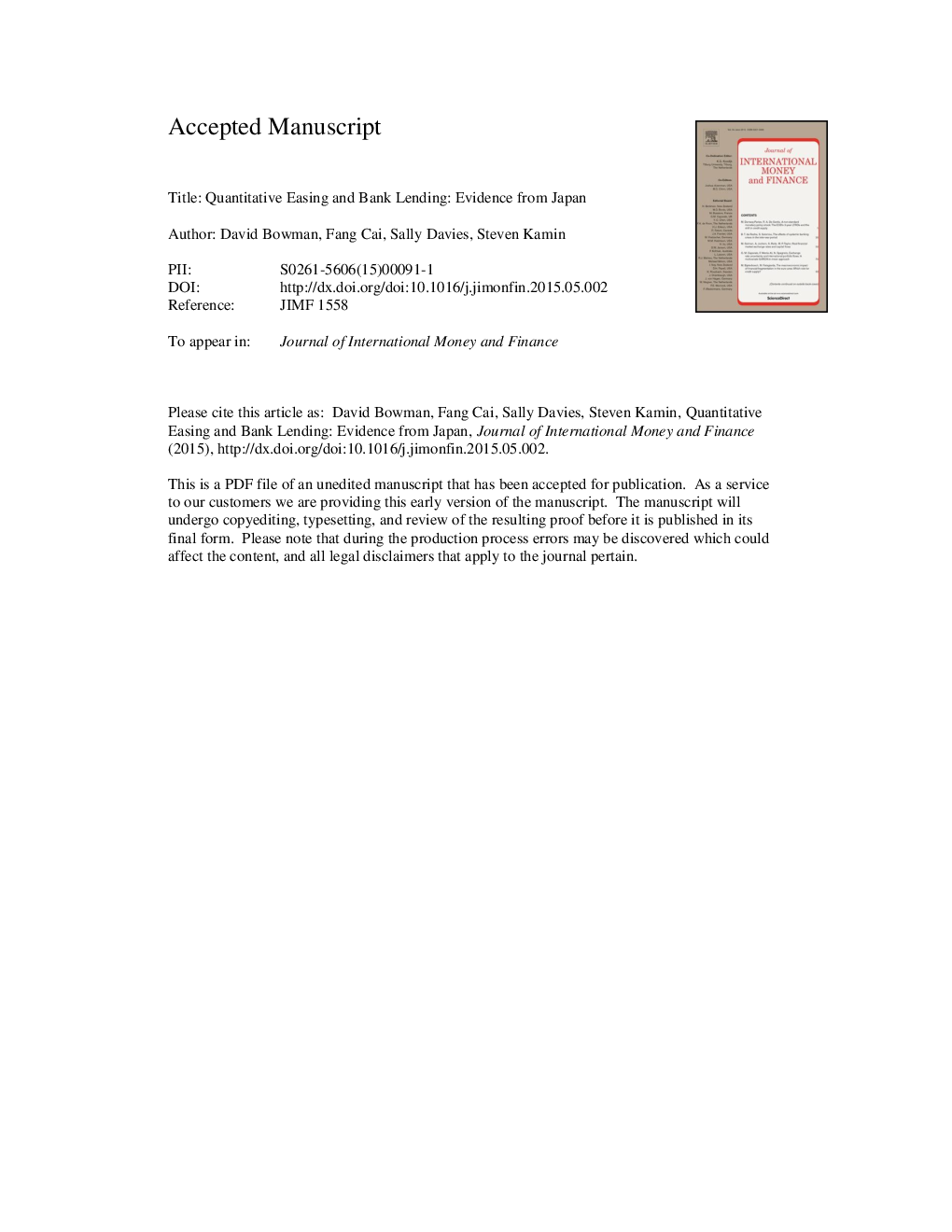| کد مقاله | کد نشریه | سال انتشار | مقاله انگلیسی | نسخه تمام متن |
|---|---|---|---|---|
| 7365586 | 1479161 | 2015 | 30 صفحه PDF | دانلود رایگان |
عنوان انگلیسی مقاله ISI
Quantitative easing and bank lending: Evidence from Japan
ترجمه فارسی عنوان
کاهش تسهیلات بانکی و وام بانکی: شواهد از ژاپن
دانلود مقاله + سفارش ترجمه
دانلود مقاله ISI انگلیسی
رایگان برای ایرانیان
کلمات کلیدی
موضوعات مرتبط
علوم انسانی و اجتماعی
اقتصاد، اقتصادسنجی و امور مالی
اقتصاد و اقتصادسنجی
چکیده انگلیسی
Prior to the recent global financial crisis, one of the most prominent examples of unconventional monetary stimulus was Japan's “quantitative easing policy” (QEP). Most analysts agree that the QEP did not succeed in stimulating aggregate demand sufficiently to overcome persistent deflation. However, it remains unclear whether the QEP simply provided little stimulus, or whether its positive effects were overwhelmed by the contractionary forces in Japan's post-bubble economy. In the spirit of Kashyap and Stein (2000) and Hosono (2006), this paper uses bank-level data from 2000 to 2009 to examine the effectiveness in promoting bank lending of a key element of the QEP, the Bank of Japan's injections of liquidity into the interbank market. We identify a robust, positive, and statistically significant effect of bank liquidity positions on lending, especially for weaker banks, suggesting that the expansion of reserves associated with the QEP boosted the flow of credit. However, the overall size of that boost was probably quite small. First, the estimated response of lending to liquidity positions in our regressions is small. Second, although the BOJ's reserve injections boosted bank liquidity significantly, much of the effect was offset as banks reduced their lending to each other. Finally, the effect of liquidity on lending appears to have held only during the initial years of the QEP, when the banking system was at its weakest; by 2005, even before the QEP was abandoned, the relationship between liquidity and lending had evaporated.
ناشر
Database: Elsevier - ScienceDirect (ساینس دایرکت)
Journal: Journal of International Money and Finance - Volume 57, October 2015, Pages 15-30
Journal: Journal of International Money and Finance - Volume 57, October 2015, Pages 15-30
نویسندگان
David Bowman, Fang Cai, Sally Davies, Steven Kamin,
